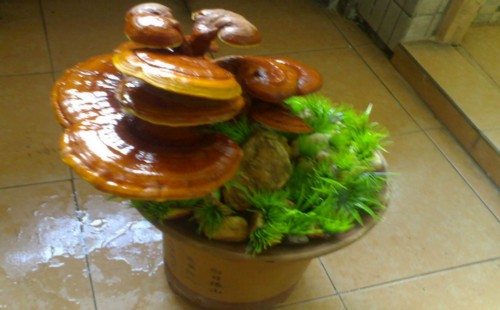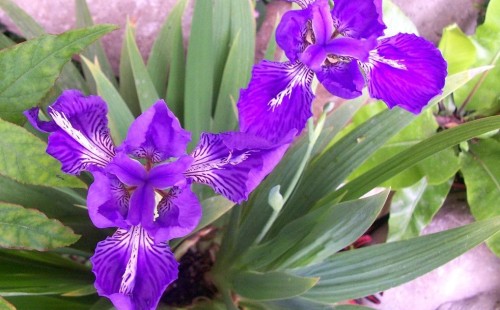How to cultivate Colored Clover-Colored Clover Cultivation Method
The leaves of colourful grass are colorful, so they have a wide range of uses. People can not only co-plant it with other flowers and plants to improve aesthetics, but also can be planted alone as a potted plant, the ornamental is also good. As a family potted plant, it is usually placed in the living room, study and other places, which can often bring a lot of interest to the environment.

Put the potted colored leaf grass in the family, the effect of beautifying the home environment is very unique. If you don't believe it, try to keep a few pots at home. However, it is necessary to raise the potted colored grass in order to get a good decorative effect. So, how to raise colored grass? Next, the editor will share with you the cultivation methods of potted colored leaf grass.
1. Soil
If it is potted colored grass, it is required that the basin soil is rich in humus, and to ensure that the soil is fertile and loose, the permeability of air and water is good, and the soil quality should be sandy loam. If cultivated in such a soil environment, it creates a good physical condition for the growth of colourful leaf grass.
Second, lighting
Colourful leaf grass is not resistant to strong light, but prefer sufficient soft light, because in the case of suitable light intensity, the more sufficient the light is, the more beautiful the leaf color is. Avoid exposure to the sun in summer, otherwise the leaves of colored grass may become rough and lose their glossiness, but in an environment where there is often insufficient light, it is also difficult for the leaves to become bright.
Third, temperature
The temperature in the growing environment is also very important, and the most suitable temperature for growth is between 20 °C and 30 °C. When the temperature exceeds this range, the color of the leaves becomes worse, which is often fatal for foliage plants. It is appropriate to keep it indoors for maintenance in winter, generally keeping the room temperature between 20 ℃-25 ℃, and the lowest temperature should be kept above 10 ℃. Because when the temperature is too low, not only the color of the leaves will get worse, but also the phenomenon of withering and shedding may occur. However, it is easy to freeze to death when the temperature is below 5 ℃.
Fourth, watering
Colourful leaf grass has certain requirements for the humidity of the growth environment, so usually watering should be timely, the original to ensure that the basin soil can often maintain a moist state, there will not be water shortage due to underwatering. However, colourful leaf grass is neither drought-resistant nor waterlogged, so attention should be paid to whether the humidity in the basin soil is appropriate before and after watering. When there is a lack of water in the growth environment, the leaves are easy to lose color due to dehydration, and the roots are also vulnerable to soft rot.
5. Fertilization
Although colourful leaf grass likes the fertile soil environment, it is not highly dependent on fertilizer, and topdressing also needs to be determined according to the growth of the plant. Generally speaking, nitrogen fertilizer can be applied 1-2 times a month in the growing season, after all, colourful leaf grass is a kind of foliage plant, proper topdressing nitrogen fertilizer can make its leaves grow more luxuriantly, the leaf color is more bright, and the ornamental is higher.
6. Pruning
Colorful leaf grass is suitable for viewing leaves, so we should try our best to make it show the beauty of branches and leaves. In order to promote the plant to produce more branches and leaves, it is usually necessary to carry out multiple coring treatments at the beginning of the seedling stage, so that not only the branches and leaves are more luxuriant, but also the plant type is more plump. After flowering, in addition to retaining the 2-3 nodes of the lower branches, the rest should be cut off in time to stimulate the plant to germinate more new branches and leaves, so that the potted plant can always maintain its beauty.
7. Diseases and insects
Colourful leaf grass is prone to quenching disease in the seedling stage, so it is necessary to do a good job of soil disinfection and sterilization before planting. However, in the growing period, it is easy to suffer from leaf spot disease, so topiramine can be sprayed with water; as indoor pot cultivation, it is easy to be attacked by scale insects, red spiders, whitefly and other insect pests in hot, humid and unventilated environment. It can usually be sprayed with water.
Time: 2019-05-29 Click:
- Prev

How to repair a piece of Ganoderma lucidum bonsai
For family users, placing a pot of Ganoderma lucidum bonsai in the auspicious position at home not only has a good meaning of auspiciousness and longevity, but also can be enjoyed. But in the daily maintenance and management process may be careless and get rid of its body parts. So, how to repair a piece of Ganoderma lucidum bonsai? actually
- Next

How to raise Iris-the Culture method of Iris
Iris has many varieties, rich colors and bright colors. Iris is a kind of flower plant with great ornamental value, which can not only be applied to landscaping, but also can be planted in pots. Iris usually reaches 80-90 cm in height and blossoms in warm May.
Related
- Fuxing push coffee new agricultural production and marketing class: lack of small-scale processing plants
- Jujube rice field leisure farm deep ploughing Yilan for five years to create a space for organic food and play
- Nongyu Farm-A trial of organic papaya for brave women with advanced technology
- Four points for attention in the prevention and control of diseases and insect pests of edible fungi
- How to add nutrient solution to Edible Fungi
- Is there any good way to control edible fungus mites?
- Open Inoculation Technology of Edible Fungi
- Is there any clever way to use fertilizer for edible fungus in winter?
- What agents are used to kill the pathogens of edible fungi in the mushroom shed?
- Rapid drying of Edible Fungi

